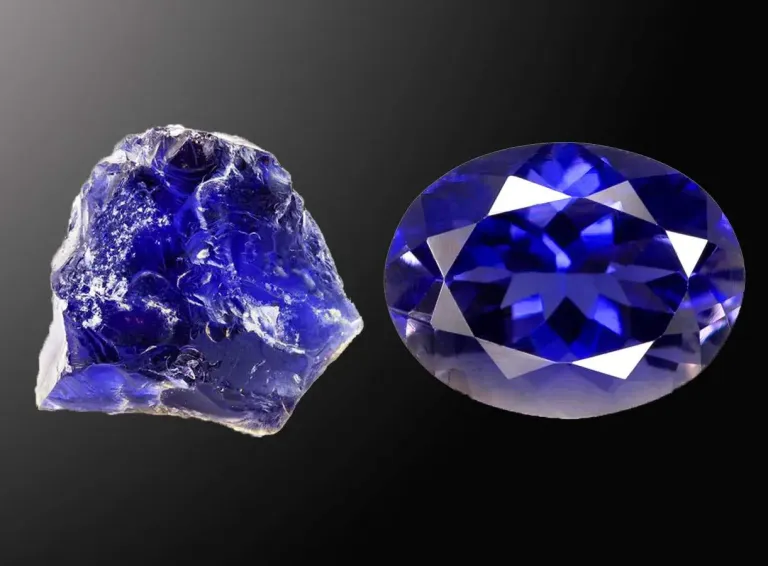
Appearance
The most well-known feature of iolite is its pleochroism, which enables it to display different colors depending on the viewing angle. Usually, these hues are violet-blue, blue, and occasionally even gray or yellow. The crystal’s orientation and the direction from which light enters determine the precise color that is seen.
The orthorhombic crystal system is where isolite crystallizes. This indicates that there are three mutually perpendicular axes of varying lengths in its crystal structure. Iolite can have a variety of crystal shapes, but prismatic crystals with a rectangular cross-section are the most common. The crystals have distinct faces and edges and can extend. When viewed from different angles, the crystal structure of an iolite can occasionally exhibit a strong trichroic pleochroism, displaying distinct colors of blue, violet, and pale yellow or gray.
Geographical Distribution
While iolite is found all over the world, substantial deposits are comparatively few when compared to other more popular gemstones. India, Sri Lanka, Madagascar, Myanmar (Burma), Tanzania, Brazil, and the United States are a few of the significant iolite producers. .
History
Iolite has a long history that goes back thousands of years. Iolite is known to have been utilized by Vikings as a navigational aid because of a special quality known as “pleochroism.” This indicates that the colors displayed by iolite vary depending on the viewing angle. When there were clouds or the sun was concealed by the horizon, the Vikings used thin slices of iolite as a polarizing filter to find the exact position of the sun. They were able to traverse the open waters with more accuracy and safety as a result.
Iolite was known as “Viking’s Compass” or “Viking’s Stone” because of its use as a Viking compass stone. This historical application of the iolite demonstrates its significance for exploration and navigation at a period when conventional navigational aids were scarce. Iolite is still prized today for its distinct beauty and historical value. It is frequently utilized in jewelry, like as necklaces, earrings, and rings.
Metaphysical Properties
Shamans have utilized iolite to increase their perception clarity. Iolite is even said to improve vision in certain traditions. Iolite is said to foster self-acceptance, intuition, and pure thinking, according to other metaphysical beliefs.

Chemical Composition
The chemical formula for iolite, a complex silicate mineral, is (Mg,Fe)_2Al_3(AlSi_5O_18). Its composition, which consists of ions of iron (Fe), magnesium (Mg), silicon (Si), and aluminum (Al), appears in this formula.
Uses
- Industrial Applications:
Thanks in large part to their distinct optical characteristics, iolite and related minerals have found use in a variety of industrial industries. Optical devices and thin-film coatings are two prominent applications. Iolite thin films can be used as coatings to transparent materials like glass to improve their optical qualities. Iolite’s pleochroism can be used to make optical filters and other devices that modify light in particular ways. Electronics, telecommunications, and optical industries can all benefit from the application of these coatings. It is possible for manufacturers to customize the optical characteristics of devices such as beamsplitters, waveplates, and polarizing filters by adjusting the thickness and orientation of iolite thin films.
- Iolite as a Gemstone:
Iolite’s intriguing pleochroism, which gives it a distinctive and alluring appearance, makes it a popular option for gemstone jewelry. Iolite can show colors of violet-blue, blue, and occasionally even gray or yellow when cut and orientated correctly. This characteristic contributes to the appeal of iolite gemstones by giving each one a somewhat unique appearance.
Table





